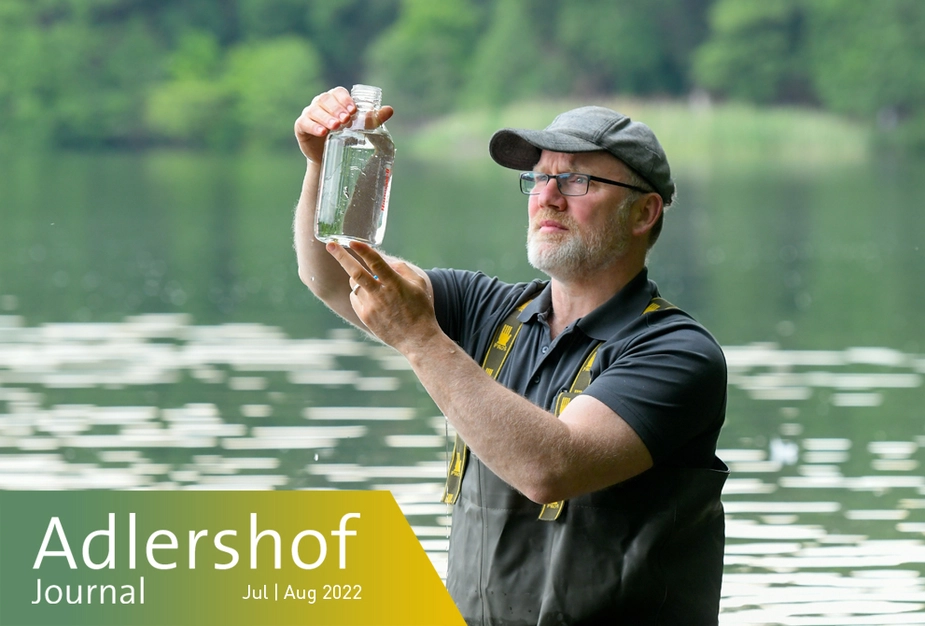The pollutant investigator
Markus Venohr conducts research for cleaner waters in Adlershof
Had Markus Venohr not looked at the Rhine every day from his childhood room in Duisburg, or had he not been canoeing with his parents in numerous holidays with his parents, he might well have become a musician. Banging the drums was a great passion of his at the time. In the end, however, his affinity to water set the course: “Canoeing on the sea at low tide – that’s something you never forget.”
The 50-year-old is now head of the “River System Modelling” research group at the Adlershof-based branch of the Leibniz Institute of Freshwater Ecology and Inland Fisheries (IGB). From what sources, through which paths, and over what time periods do nutrients such as nitrogen or phosphorus get into rivers and lakes, and in what concentrations do they disseminate? These are but some of the questions that Venohr deals with on a normal workday.
Answering these questions has been facilitated at IGB by the creation of the MONERIA model in 1996, commissioned by the Umweltbundesamt, the German Environmental Agency. The model uses digital tools to calculate the pathways of nitrogen and phosphorus through the waters. Until then, it was only possible to measure pollutant concentrations at certain points. The computer-aided method yields an overall picture of inputs and the water quality for entire drainage basins.
Nitrogen largely comes from agriculture, where it is applied to the fields as fertiliser, whereas phosphorus comes from municipal sewage treatment plants and private households. They both cause algae to proliferate in waters. When they die, they are decomposed by bacteria, which use a lot of oxygen to do so – oxygen that is then unavailable to fish: “This used to happen all the time,” says Venohr. “One reason why it isn’t anymore is the work that we have done.” In the two decades or so he has spent at the IGB, the quality of Germany's waters has made "great progress,” he says.
Venohr has been tackling this subject since 1999, when the then-student of geography, meteorology, and oceanography started writing his thesis at the University of Kiel. It was about the “quantification of nutrient inputs in the drainage basin of the upper Stör”, a tributary of the Elbe in Holstein. The digital model developed by IGB had just entered the market and Venohr was the first external user to base his calculations on it. When he sent a copy of his thesis to the project head at IGB, the reply was prompt: “You can start tomorrow.”
His first desk was at the IGB headquarters at Müggelsee, which moved to the newly opened branch in Adlershof about a decade ago. He rides to work from Steglitz, where he lives with his wife, three children and a cat next to the Botanical Garden, twenty kilometres in one hour, every day, and back in the evening. For him, this is a tried-and-tested method to shake of the stress of the day, and to arrive at home in a relaxed mood. For his round birthday, he asked for a canoe once more: “Here we go again.”
Dr. Winfried Dolderer for Adlershof Journal
